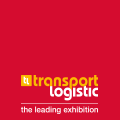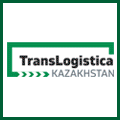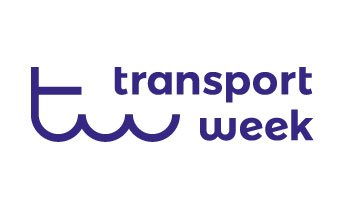A total of 14.8 million tonnes (gross) of goods passed the ship's rail in Rostock during the first half of 2017. The lion's share of 13.9 million tonnes was handled at the sea port. According to the port and shipping authority another 900,000 tonnes were loaded and unloaded at other port facilities in Rostock, such as the chemical port of Yara and the cargo and fishing port. The amounts of cargo at all the port facilities of Rostock were thus just 100,000 tonnes below the very high level of last year. The number of ferry passengers carried to and from Northern Europe increased by 70,000 to one million. "This is a pleasing result on the whole since it shows the efficiency and versatility of Rostock's port economy. Rostock is the largest German port on the Baltic Sea both in goods traffic and in ferry and cruise passenger traffic. Thus the port and the companies working at the port again contribute to the prosperity of Rostock, as they did in the time of the Hanse", says Jens A. Scharner, Managing Director of ROSTOCK PORT GmbH.
Rostock sea port
The overseas port achieved exactly the same result as in the same period last year, at 13.9 million tonnes of goods handled. Eight million tonnes came from the wheeled cargo of ferry and ro-ro traffic, as last year. The share of ferry and ro-ro goods in the overall handling at the all-purpose port of Rostock amounted to 58 percent in the first six months. 42 percent or 5.9 million tonnes were achieved with the handling of dry and liquid bulk goods and general cargo. "The very good trend in the liquid goods division succeeded in evening out the reductions due to the harvest and building sites in the handling of grain and fertilizer, also in terms of tonnes", says Dr. Gernot Tesch, Managing Director of ROSTOCK PORT GmbH.
Rostock sea port recorded 3,683 calls by ferry, ro-ro, cargo and cruise vessels in the first six months of the year, 2,897 of which were port calls by ferries and ro-ro vessels.
Wheeled cargo
191,951 trucks (escorted units) were carried on the three ferry and three ro-ro services to and from Denmark, Sweden and Finland, an impressive increase of eight percent. Handling of unescorted units also increased, with 65,865 trailers having been loaded and unloaded (+ two percent). Also, 7,437 railway wagons were carried by sea in the first half of 2017. This was 4,111 wagons less than in the same period last year. "Fewer railway wagons ferried as a result of both railway ferries having spent time in the shipyard did have an impact on the handling statistics in tonnes but does not change the very good trend in ferry and ro-ro traffic which is obvious from the high growth rates in the segments of trucks, trailers and cars", explains Dr. Gernot Tesch. „9.5 percent more cars carried speak a very clear message."
34 intermodal transport trains are handled each week at the intermodal transport terminal, running to and from Verona (13), Hamburg (5), Karlsruhe (5), Brno (6), Duisburg (4) and Wels (1). During the first six months of 2017 the number of trailer units handled at the intermodal terminal increased from 38,351 in the same period last year to 43,066 this year and thus by 12 percent. "The trend in intermodal transport is fair to middling this year. The shifting of the train to and from Novara in the second quarter of 2017 will dampen the intermodal goods volume for the rest of the year. We continue to work with our partners to ramp up individual relations and expand new intermodal transport connections. Many intermodal connections show a positive trend, especially the one between Rostock and Brno", says Dr. Gernot Tesch.
Bulk goods and general cargo
The handling of liquid goods during the first six months of 2017 increased to a little over 1.4 million tonnes. In particular more biodiesel, gas oil and naphtha were pumped across the edge of the quay.
There was a slight decline in the handling of dry bulk by 200,000 to four million tonnes. As a result of the slightly lower harvest of the previous year, 390,000 tonnes of wheat and barley less were handled in the first six months. For the 2016/2017 harvest year the port again proceeds from growing grain volumes. Increases were recorded in the handling of rapeseed (plus 160,000 tonnes) and coal (plus 120,000 tonnes).
In the general cargo division 330,000 tonnes were hoisted over the sides and thus 50,000 tonnes less than in the first half of last year. Fewer pipes, wind power plants and rotor blades were handled, but the numbers were up for sheet metal, slabs and cranes.
Projects and investments by ROSTOCK PORT GmbH
„In the first six months of 2017 ROSTOCK PORT GmbH has already invested around ten million Euro in the infrastructure and the improvement of processes at the port", says Jens A. Scharner.
Three projects that are part of an effort to improve the traffic flow were prepared for implementation this year: the construction of the new motorway junction to the eastern seaport, demolition of the old railway signal box in this area and the new building of a two-lane elevated road to the port area east of the oil port. These activities were started according to plan. The federal government is still going to conduct a formal plan approval procedure for the direct access and exit areas of the motorway junction at the A19. The planning for permission to build these was initiated. Construction is to start not later than 2019.
In order to support the increased traffic flows and handling activities in the ro-ro division the office building in the southern port area was pulled down. The area thus created will be paved still this year and is then to be used as an additional trailer depot.
For autumn 2017 ROSTOCK PORT plans an ITT and the start of construction for the new building of dry bulk berth 23 with a capex of around 20 million Euro. The thorough repairs of berths 21 and 22 at port basin B will be completed in the summer of 2017.
At the oil port ROSTOCK PORT currently invests around four million Euro in renewing the eastern transverse quay and the jetty facility at berths 3 and 4.
As a statutory compensation measure for infrastructure projects at the port, ROSTOCK PORT has been investing in the creation of an area of woods and meadows of around 20 hectares east of Werftallee in Gross Klein since last year. This plot is owned by ROSTOCK PORT and will be improved into a park-like recreation area until the end of 2018.Furthermore ROSTOCK PORT will complete the nature protection project for the ecological improvement of the Diedrichshäger Moor (bog) near Warnemünde still this year. This measure was approved and granted planning permission in 2009. It will be available to the port as potential compensation in nature protection for future extensions at the existing special-purpose area of the port via an eco-account.
Warnemünde cruise port
The 2017 cruise season started on 27 April with the arrival of the cruise liner AIDAdiva. This season Rostock-based shipping company AIDA Cruises again sends two of its vessels to its Baltic home port of Warnemünde, AIDAdiva and AIDAmar. 40 out of 50 port calls with full turnover of passengers are being conducted by AIDA Cruises this year. Also, Costa, MSC, NCL and other shipping companies are changing some of their passengers here on 61 occasions. Especially German passengers will be embarking and disembarking in Warnemünde.
190 port calls by 36 cruise liners are expected this year. 173 times the vessels are berthing in Warnemünde and 17 times at the sea port. Five vessels headed for the mouth of river Warnow for the first time: Viking Sky on 28 April, MSC Magnifica on 13 May, Norwegian Getaway on 17 May, Seven Seas Explorer on 2 July and Columbus on 26 July.
The 2017 cruise calendar shows three quadruple port calls on 16 June, 26 August and 1 September. More than 100 port calls by cruise liners take place on Fridays (39), Saturdays (43) and Sundays (35). All told, cruise liners are calling at the port on river Warnow on 112 days of the year 2017. On 12 October the season will end with the port call of the cruise liner Balmoral of the UK shipping company Fred Olsen Cruise Line.
With more than 800,000 cruise passengers embarking and disembarking, slightly more passengers are expected to pass through the port this year compared to 2016.
„In cooperation with the airport Rostock-Laage and many partners we are further expanding the turnaround of international passengers at the Warnemünde cruise port. After around 71,000 Spanish, Italian and French cruise guests who arrived or departed via the airport of Rostock-Laage last year we expect further growth to around 80,000 this season", states Jens A. Scharner.
For further information please go to www.rostock-port.de

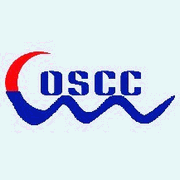
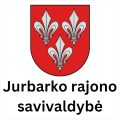
.jpg)

